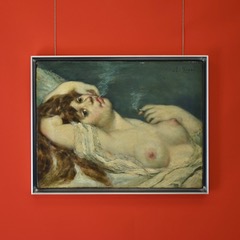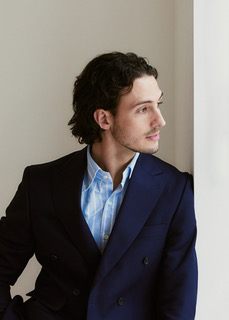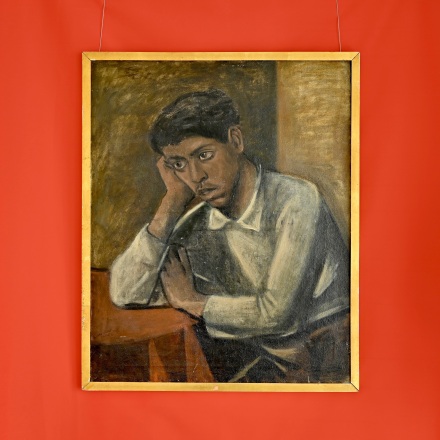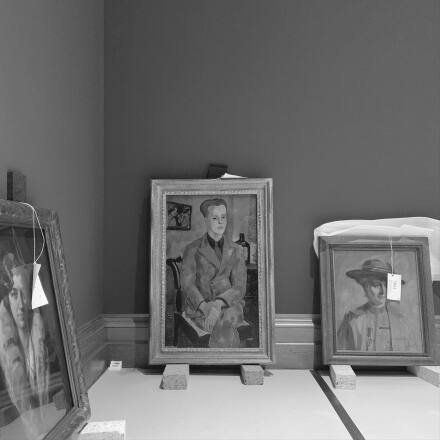The French Exit group show brought to life by the curatorial eye of Mattias Vendelmans invites a dialogue between artists and their muses, considering just what happens when one skips the farewell in search of something more enticing after dark. How does the basic notion of privacy and vulnerability continue to pique our curiosity? Spanning works from oil paintings and sculptures to pen and paper, from Baudelairean Paris to the suburbs of 1930s Stockholm, an ongoing exploration of organic tenderness and bestiality in human nature unfolds.
Vendelmans’ Mayfair sun-soaked loft highlighted works from Armand Dore’s Nude, Smoking and Reclining (c. 1860-65) to John Lundqvist’s Figure from the Resurrection Statue at Skogskyrkogården (c. 1928-41) that ended on the 22nd of June.
AO London sits down with the Flemish-born collector to discuss his pilgrimage through private collections and visions for new show formats ahead.Â
Your latest show brings together a dynamic amalgamation of pieces across different mediums, can we go back to the first piece you collected and what jump started this journey?
The bust by John Lundqvist, a focal point of The French Exit, represents a foundational purchase as I started my own private collection a few years back. It represents a soul, drifting between life and death, seemingly suspended in a beautiful dream. When I began to thread the needle between new works carrying a similar sense of solitude and self-exploration, I knew where this show had to begin.
Does your process of curating a show normally begin with a specific piece or external pointed reference guiding the journey?
The European fin-de-siècle I find endlessly fascinating and much of the gallery’s programme revolves around it. It gives me great pleasure to find artists from this period who have not been exhibited in London before (and in some cases, anywhere, ever). My purpose is to provide a platform for their work to be carefully resuscitated.Â
One such example is Pelle Swedlund (1865-1947), a very talented Symbolist painter whose landscapes represent the passage of time across the fin-de-siècle. I am currently preparing the catalogue raisonné of Swedlund’s paintings and look forward to showcasing his work later this year.
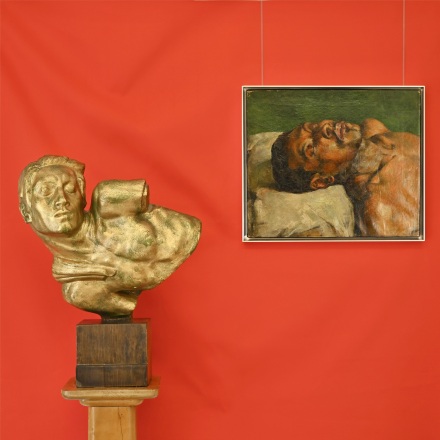
Left to right: John Lundqvist, Figure from the Resurrection Statue at Skogskyrkog̴rden (c. 1928-41) and Emile Thysebaert, Sleeping Man (c. 1873 Р1963)
What have you learned about the diversity of conversations around art from work in the Swedish, British and other market landscapes?
Thinking back to my eight years in Sweden, a sense of perspective continues to prove the most valuable. It is tempting to believe that there is one ‘art world’, but in truth there are many such worlds… each with their own charms, parallels and overlaps with one another. Your ‘art world’ can be as large or as small as you want it to be.
Moving from a Central London gallery to further afield, what inspired you to shake things up in this next chapter for Vendelmans Gallery?
Credit where credit is due – other gallerists have paved my way from Maureen Paley in Hove and Lucy Chadwick in Biarritz. Their respective spaces (coincidentally in small seaside towns) allow them to unfold and articulate their programme away from the noise of New York, London or Paris. My next chapter begins in Margate, where one finds a great offering of studios and spaces focused on contemporary art. But what about the historic works? Although I now think Tracey Emin is giving him a run for his money – Margate’s history dates back to J.M.W. Turner.
Where do you turn when you are in a creative rut? And who is your second eye amid an artistic dilemma?
Films and music are a great source of inspiration. Denton Welch’s novel ‘In Youth Is Pleasure’ inspired my inaugural 2023 exhibition, while Marilyn Monroe’s performance of the song ‘Lazy’ inspired ‘The French Exit’s’ title. For a second (and honest) opinion I turn to my partner Nick, who simply has the best eye.
Walk us through the gallery uniform.
Our bright green Vendelmans tote is my uniform. It gives me a sense of pride in what I’m bringing into the world. I could have done very chic filter cigarettes like Sotheby’s did once upon a time, but a tote is somewhat more practical.
When it’s time to celebrate after a successful preview, where to, what’s on tap and who is sat at the table?
For me, it’s more about the company. Usually, these are people who have in some way contributed to the exhibition, spiritually speaking or in relation to the lengthy hardcover catalogues you will find throughout our bookshelves.
What artist or location has you currently transfixed? Further, if money was no object what piece would you collect next?
I think Europe at around 1900 will hold its spell on me for a long time to come. And in terms of my dream acquisition, it would have to be a work by Arnold Böcklin (1827-1901), whose painted worlds sit at a wondrous intersection between lightness and darkness, between camp and seriousness.
In 5 years time, share something you hope to have accomplished.
More of the same – that’d be swell.
All images courtesy of Vendelmans Gallery.Â

